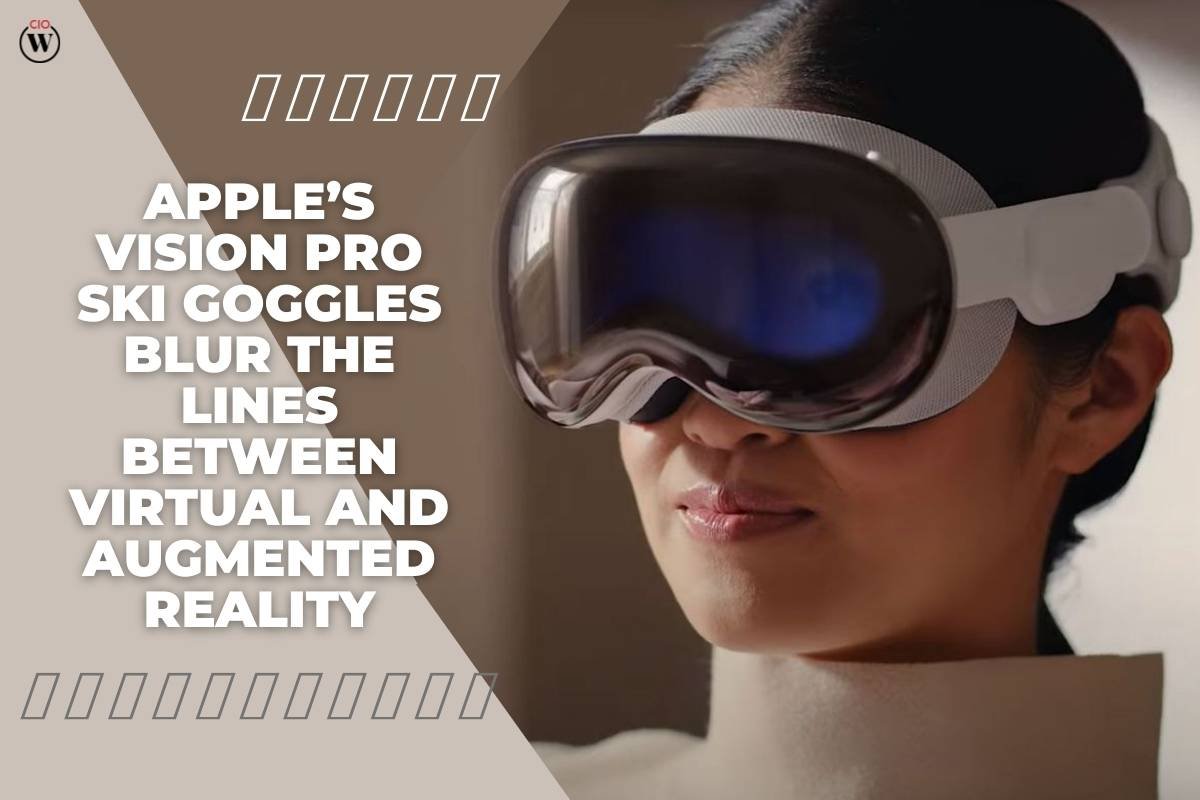Source – Sky News
The company recently launched its much-anticipated Apple Vision Pro ski goggles at a hefty price of $3,500, touting them as groundbreaking in the realm of technology. However, the tech community finds itself embroiled in a linguistic conundrum, as Apple insists that the goggles do not fall under the category of virtual reality but rather “spatial computing.”
The problem lies in the lack of a universally accepted definition for spatial computing, with terms such as “mixed reality,” “augmented reality,” “holographic computing,” “the metaverse,” and “XR” adding to the confusion. This lack of clarity hampers not only communication within the industry but also consumers’ understanding of the technology.
Deciphering Spatial Computing and the Apple Vision Pro’s Reality
Attempting to untangle the web of terminology, spatial computing is described here as an immersive video feed of the physical world combined with internet elements. When wearing the Vision Pro, users can watch a movie through a screen on their face while simultaneously observing their surroundings. However, it’s crucial to note that what users perceive is not the real world but a near-live streaming video with superimposed apps. This approach aligns with Meta’s Quest 3 headset, indicating a trend in the industry. The debate around terms like “mixed reality” and “pass-through” further complicates the issue, leaving consumers in the dark about what these devices truly offer.
The Reality Check – Mostly Virtual Reality with a Glimpse of Augmented Reality
After extensive discussions with experts, a verbal shortcut emerges — most experiences labeled as spatial computing or mixed reality fall on a continuum between virtual and augmented reality. Virtual reality immerses users in a simulated digital world, while augmented reality overlays digital elements onto the real world.
The Apple Vision Pro and Quest 3, despite Apple’s spatial computing claims, lean more towards virtual reality with a hint of augmented reality. The significance of these verbal nuances becomes apparent as entrepreneurs like Matthew Ball advocate for simplifying the language to “immersive 3D,” emphasizing the potential for groundbreaking digital experiences that bridge the gap between reality and technology.
In the quest for immersive 3D experiences through unobtrusive devices, Apple envisions a future where digital overlays seamlessly blend with the real world. However, as the industry grapples with confusing terminology and the technology is still in its early stages, consumers are left with pricey compromise products.
The Apple Vision Pro, while pushing boundaries, highlights the ongoing challenge of communicating complex technological concepts to the average consumer and underscores the gap between the current state of the technology and the promising future it aims to deliver.









